Abstract
In Australia’s grain production, wheat is the largest in 2022, reaching 36.2 million tonnes (Mt). Australia is a world-class grain producing country, and much of its production is exported. In particular, most of the wheat consumed domestically is exported, with export volume accounting for approximately 60-70% of total production. Their use as food and animal feed is also important, and animal feed grains (e.g. barley and corn) are essential for raising livestock. Although climate change and drought have affected harvests in some regions in recent years, Australia’s grain production has remained stable and continues to meet global market demand for wheat and barley in particular.
Production(production (production volume))
Australian grain production has experienced significant growth between 1961 and 2022. Wheat, in particular, recorded its highest ever production volume of 36.2 million tonnes (Mt) in 2022, reaching 100% of its peak. This is due to improved agricultural techniques, improved climatic conditions and optimised crop management. Wheat production has been particularly stable, with Australia being one of the major exporters with a significant influence on global markets. In the past, harvests have been affected by abnormal weather such as drought and floods, but in recent years there has been a remarkable improvement in quality and productivity. This stable production plays a vital role in Australia’s agricultural economy, meeting demand for domestic consumption as well as export markets.
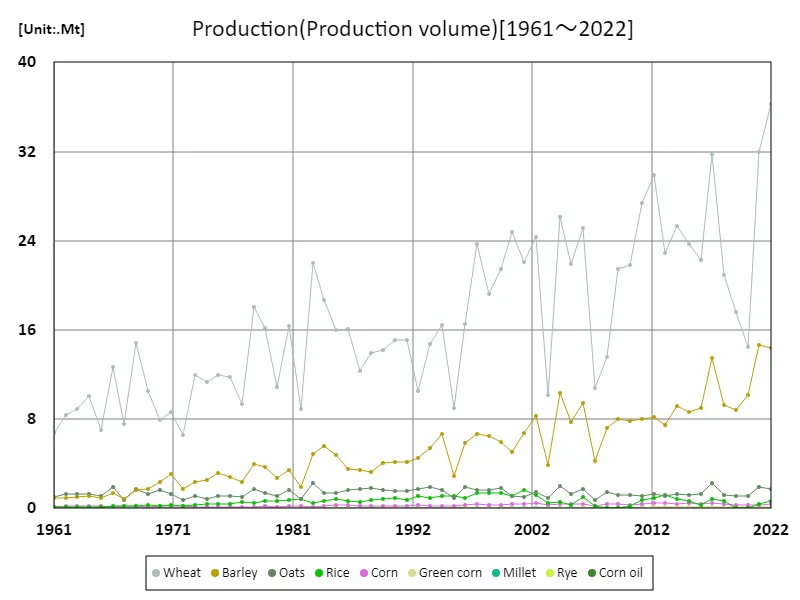

The maximum is the latest one, 36.2Mt of Wheat
Production (food)
Wheat production for food use has consistently held a significant position in Australian cereal production between 1961 and 2021. In particular, wheat production for food use peaked at 2.35 million tonnes (Mt) in 2020, with 98% of that amount currently being produced. While most wheat is exported, domestic food demand is stable and it is consumed in a variety of forms, including bread and pasta. Advances in agricultural technology, improved varieties, and improved irrigation techniques over the past few decades have made stable production possible, and the amount of crops produced for food use is also on the rise. Although there are years when harvests are reduced due to climate change and drought, overall supplies remain stable. These trends are having a major impact on domestic consumption as well as the export market.
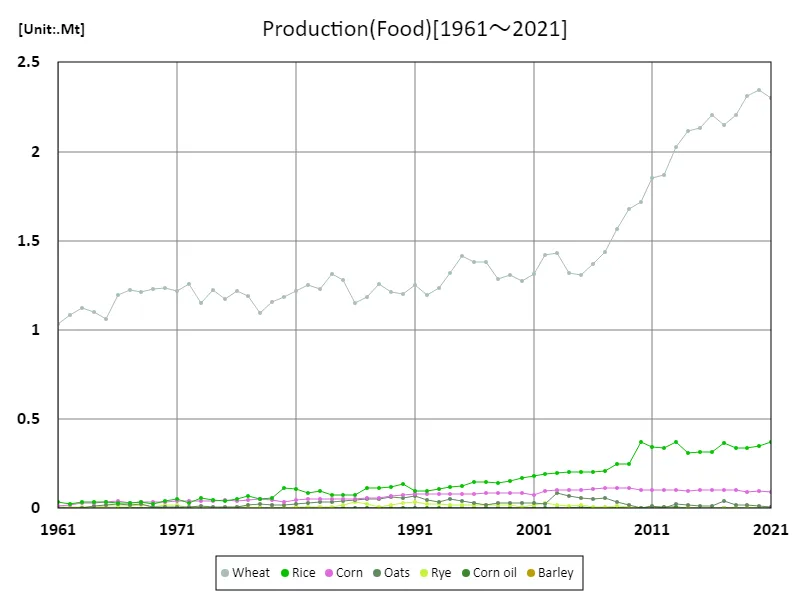

The maximum is 2.35Mt[2020] of Wheat, and the current value is about 98%
Import and export (exports)
Australian grain exports reached a peak of 26.3 million tonnes (Mt) in 1961 and have remained a stable exporter ever since. Total exports for this period were 37.5Mt, with an average export volume of 6.24Mt. Wheat is a particularly important export crop, accounting for a large proportion of Australia’s grain exports. Over the past few decades, Australia has played a vital role as a reliable supplier of wheat to global markets. In addition, although export volumes fluctuate temporarily due to climate and market fluctuations, overall the country is highly dependent on exports and is a major supplier to regions such as Asia, the Middle East, and Africa. This stable export volume is supported by growing domestic production and demand in export markets.
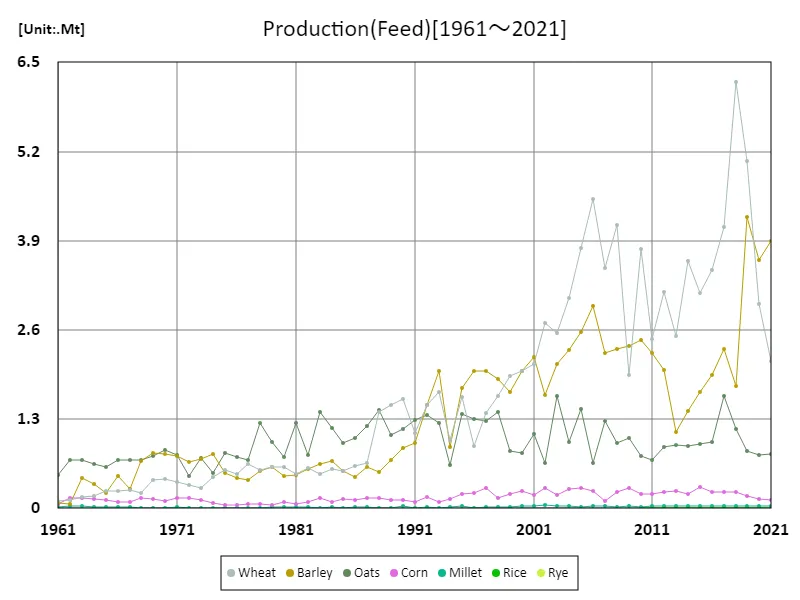

The maximum is 6.22Mt[2018] of Wheat, and the current value is about 34.6%
Animal (feed)
Australian animal feed cereal production has increased significantly since 1961, particularly wheat. Wheat production was at its highest in the year 2013, with 6.22 million tonnes (Mt) used as animal feed, which remains the highest to date. This trend reflects Australia being a large agricultural nation with a large livestock industry, resulting in stable demand for grains for animal feed. While some wheat is used for human consumption, it also plays an important role as animal feed, particularly for cattle, chickens and sheep. In recent years, as the scale of livestock farming and demand has expanded, the production of animal feed has also increased. Additionally, improvements in grain production efficiency and improved crop varieties have supported increased production volumes and are a key factor in Australian agriculture as a whole.
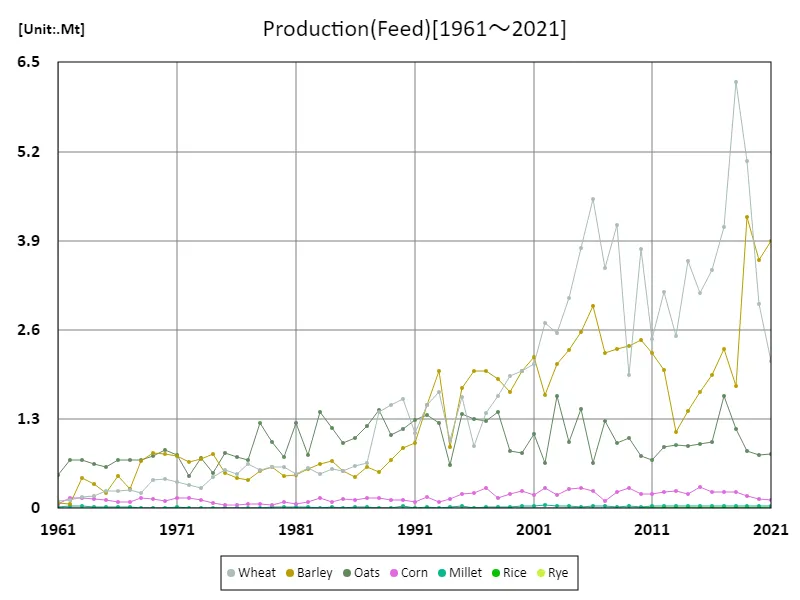

The maximum is 6.22Mt[2018] of Wheat, and the current value is about 34.6%
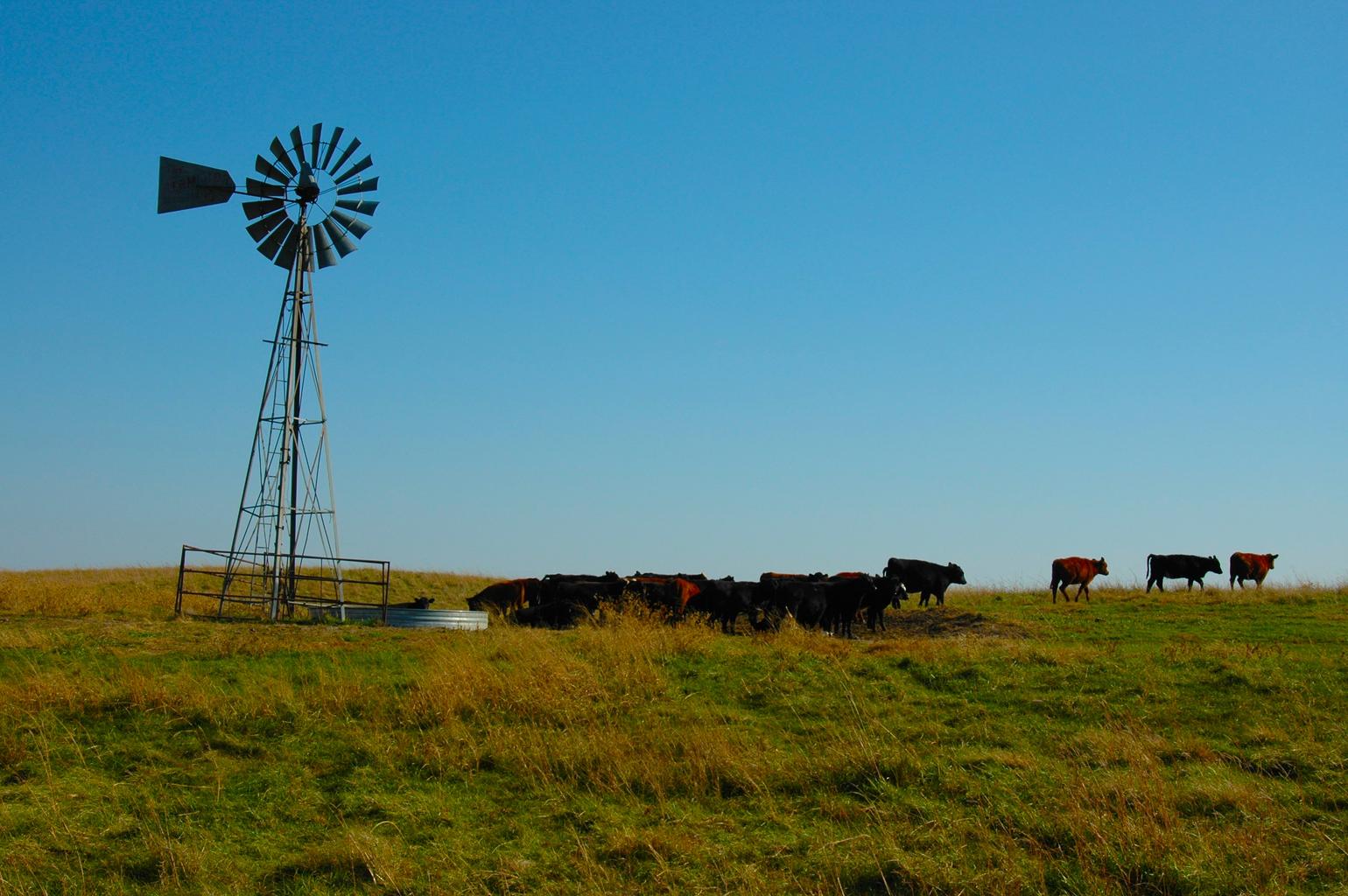


Comments